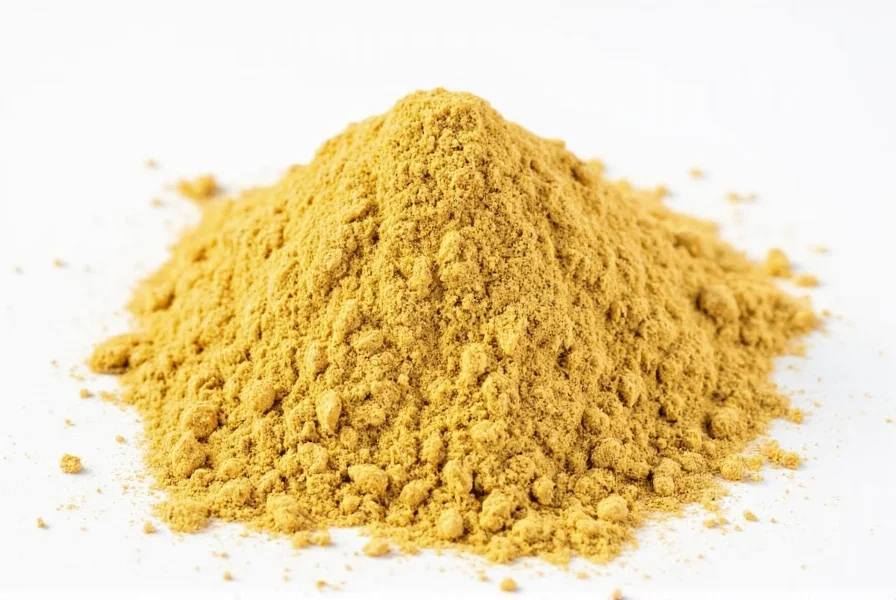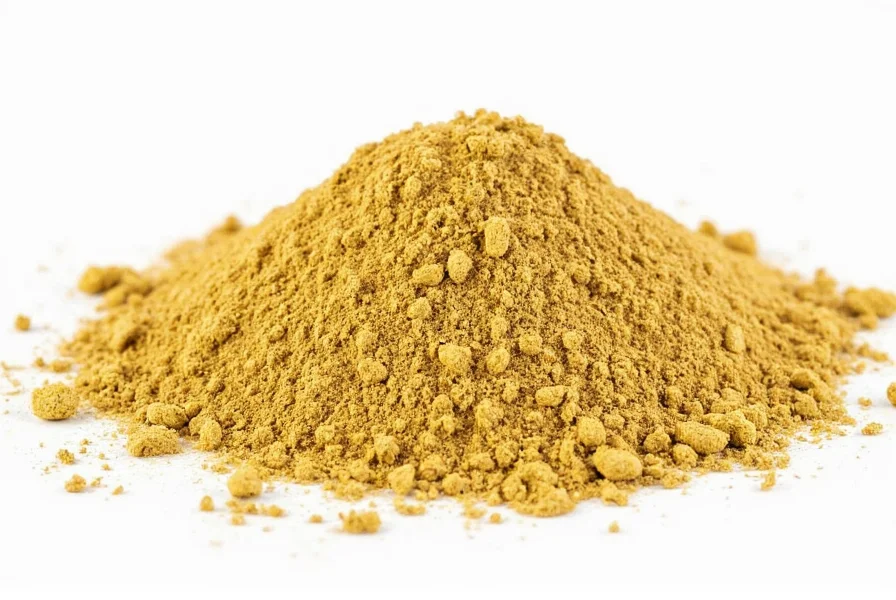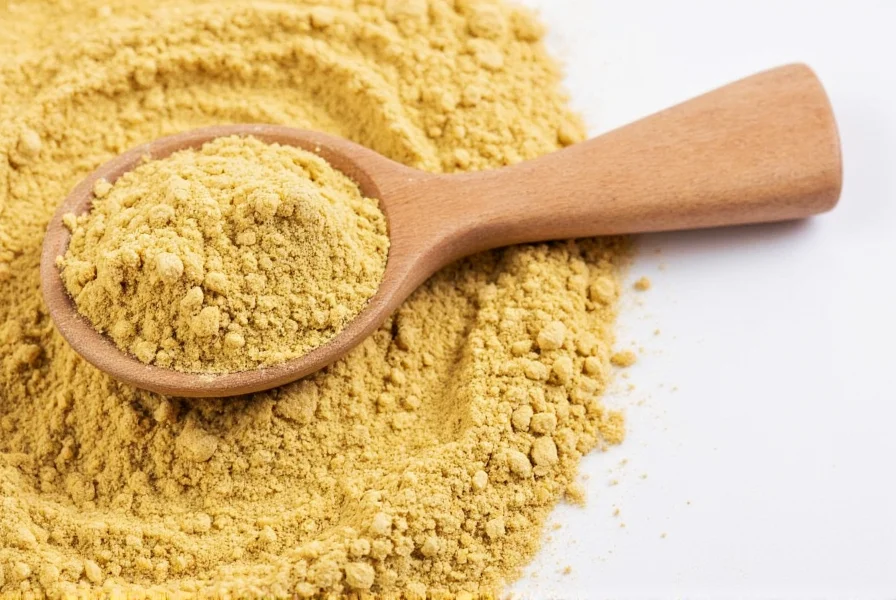When you're in the middle of cooking and realize you've run out of ginger powder, knowing reliable substitutes can save your recipe. Whether you're baking cookies, preparing curry, or making ginger tea, having practical alternatives ensures your dish maintains the distinctive warm, spicy flavor ginger provides. This guide delivers precise substitution ratios and explains which alternatives work best for different cooking applications.
Why Substitution Ratios Matter
Ginger powder packs more concentrated flavor than fresh ginger due to the dehydration process. Understanding the proper conversion is essential for maintaining your recipe's intended flavor profile. Using too much substitute can overpower your dish, while too little leaves it lacking that characteristic ginger zing.
| Substitute | Ratio (for 1/4 tsp ginger powder) | Best For | Flavor Notes |
|---|---|---|---|
| Fresh ginger, grated | 1 tablespoon | Savory dishes, stir-fries, marinades | Fresher, brighter flavor with more citrus notes |
| Ground allspice | 1/2 teaspoon | Baking, spice cakes, pumpkin recipes | Warmer, more complex flavor with clove notes |
| Cinnamon + cardamom (1:1) | 1/4 teaspoon total | Cookies, muffins, chai tea | Sweeter profile, less spicy heat |
| Ginger juice | 1/2 teaspoon | Smoothies, dressings, beverages | Pure ginger flavor without fibrous texture |
| Ground cloves | 1/8 teaspoon | Gingerbread, spice cookies | Stronger heat, use sparingly |
Fresh Ginger as the Top Ginger Powder Substitute
When substituting fresh ginger for ground ginger, remember that fresh contains water and has a more delicate flavor profile. The standard conversion is 1 tablespoon freshly grated ginger equals 1/4 teaspoon ginger powder. This ginger powder substitute for baking works particularly well in recipes where moisture content won't affect the final product.

To maximize flavor when using fresh ginger instead of ground ginger ratio adjustments, peel the ginger and use a microplane grater for the finest texture. The white pith just beneath the skin contains the most potent flavor compounds. For recipes requiring extended cooking time, add fresh ginger earlier to allow flavors to develop fully.
Best Substitutes for Baking Applications
When looking for a ginger powder replacement in cookies or cakes, ground allspice provides the closest flavor profile. Use a 2:1 ratio (1/2 teaspoon allspice for 1/4 teaspoon ginger powder) for most baking applications. Allspice contains notes of cinnamon, nutmeg, and clove that mimic ginger's complexity.
For gingerbread specifically, a combination of 1/8 teaspoon ground cloves plus 1/8 teaspoon cinnamon creates an excellent ginger powder substitute for baking. This blend delivers the spicy warmth without overwhelming the other spices in traditional recipes.
Substituting in Savory Dishes and Curries
Ginger powder replacement chart recommendations differ for savory applications. In curries and stir-fries, fresh ginger remains the superior choice. The 1:4 ratio (1 tablespoon fresh to 1/4 teaspoon powder) works well, but you can increase the amount slightly if you prefer stronger ginger flavor.
For a ginger powder substitute in curry where fresh isn't available, try equal parts ground cinnamon and cardamom. This combination provides warmth without the citrus notes of fresh ginger, creating a more earthy profile that works well with Indian and Thai curries.
Common Substitution Mistakes to Avoid
Many home cooks make critical errors when substituting ginger powder. The most frequent mistake is using equal amounts of fresh and powdered ginger, which results in under-seasoned dishes. Remember that ginger powder is approximately four times more concentrated than fresh.
Another common error involves substituting with ginger ale or ginger beer. These contain sugar and carbonation that will alter your recipe's texture and sweetness. They work only in specific beverage applications, not as general ginger powder alternatives for recipes.
Creative Solutions for Special Dietary Needs
For those avoiding ginger due to medical conditions but wanting similar flavor, galangal powder makes an interesting alternative. Use at a 1:1 ratio with ginger powder, though note it has a sharper, more peppery profile that works best in Southeast Asian dishes.
Vegan cooks seeking ginger powder substitutes for baking might consider a blend of 1/4 teaspoon mace plus 1/4 teaspoon nutmeg per 1/4 teaspoon ginger powder. This combination delivers warmth without the allergen concerns of some ginger products.
When Substitution Isn't Recommended
Certain recipes rely so heavily on ginger's unique chemical properties that substitution significantly alters the final product. Traditional ginger snaps, for example, depend on ginger's specific interaction with baking soda for their characteristic spread and texture. In these cases, it's better to make a different recipe than to substitute.

Storing Your Ginger Alternatives
Understanding proper storage extends the shelf life of your ginger powder substitutes. Ground spices like allspice and cinnamon maintain potency for 6-12 months in airtight containers away from light. Fresh ginger keeps for 2-3 weeks refrigerated in a paper bag, or up to 6 months frozen. For frequent use, freeze grated ginger in ice cube trays with a bit of water for ready-to-use portions.
What's the best ginger powder substitute for cookies?
Ground allspice works best for cookies, using a 2:1 ratio (1/2 teaspoon allspice for every 1/4 teaspoon ginger powder). For gingerbread specifically, combine equal parts ground cloves and cinnamon at 1/8 teaspoon each per 1/4 teaspoon ginger powder. These ginger powder substitutes for baking maintain the warm spice profile without overwhelming sweetness.
Can I use fresh ginger instead of ground ginger in curry?
Yes, fresh ginger makes an excellent ginger powder replacement in curry. Use 1 tablespoon freshly grated ginger for every 1/4 teaspoon ginger powder called for in your recipe. Add it early in the cooking process to allow the flavors to develop fully. Fresh ginger provides a brighter, more complex flavor that works particularly well in Thai and Indian curries.
How do I substitute ground ginger for fresh ginger?
When substituting ground ginger for fresh, use 1/4 teaspoon ginger powder for every 1 tablespoon of fresh ginger. This fresh ginger instead of ground ginger ratio accounts for the concentration difference due to dehydration. Remember that ground ginger lacks the citrus notes of fresh, so you might add a tiny pinch of lemon zest to compensate in recipes where that brightness matters.
What's a good ginger powder alternative for someone with ginger sensitivity?
For those with ginger sensitivity, try a blend of equal parts ground cinnamon and cardamom. Use 1/4 teaspoon total of this mixture to replace 1/4 teaspoon ginger powder. Galangal powder also works as a ginger powder alternative, though it has a sharper, more peppery flavor profile that's better suited to savory dishes than baking.
Can I use ginger ale as a ginger powder substitute?
Ginger ale works only in specific beverage applications, not as a general ginger powder substitute. The sugar and carbonation significantly alter recipes. For baking or cooking, better ginger powder alternatives include fresh ginger, allspice, or spice blends. If making ginger tea, use fresh grated ginger instead of relying on ginger ale as a substitute.











 浙公网安备
33010002000092号
浙公网安备
33010002000092号 浙B2-20120091-4
浙B2-20120091-4